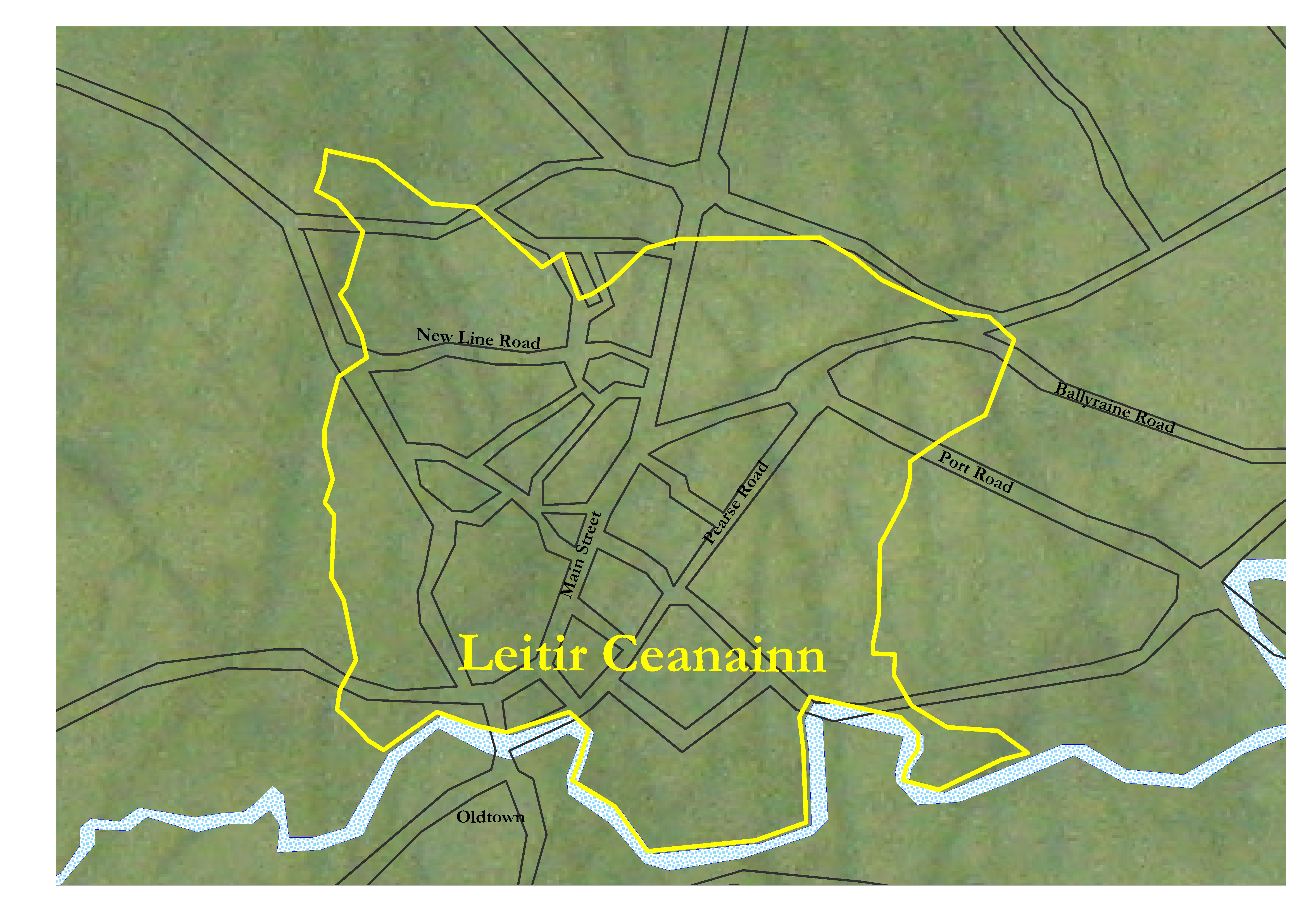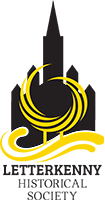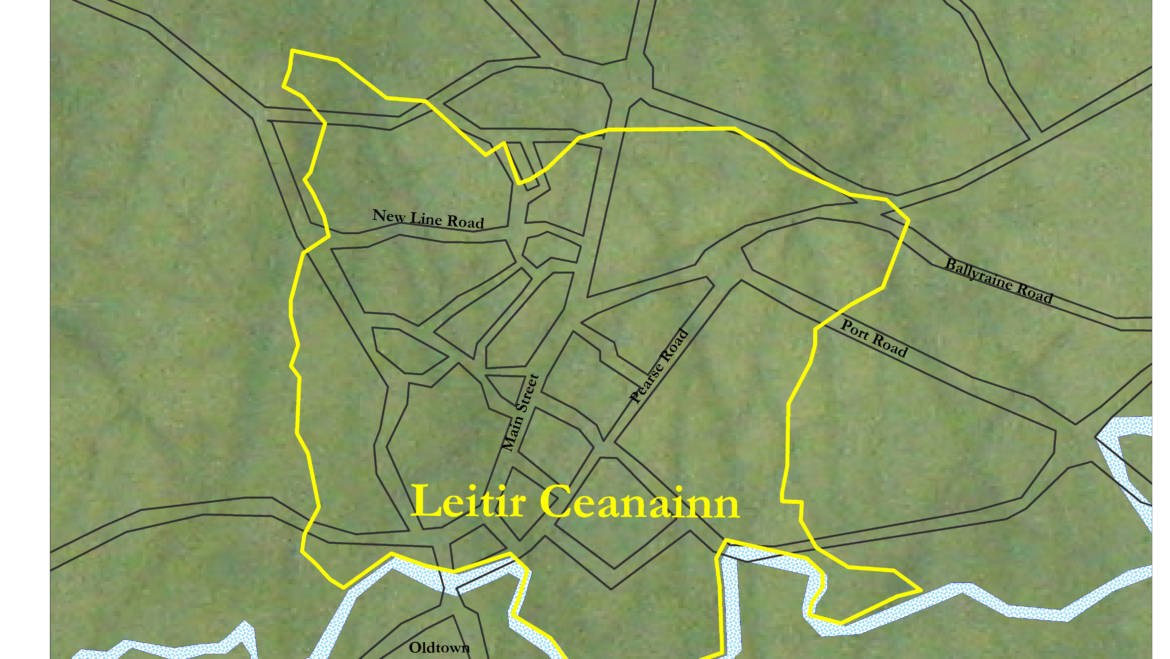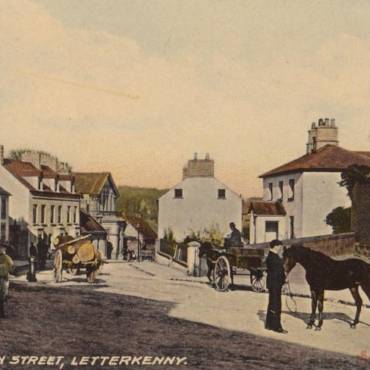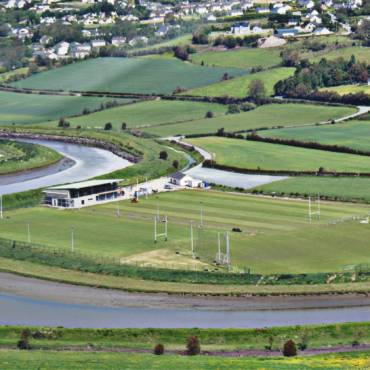Letterkenny/Leitir Ceanainn
The name ‘Letterkenny’ comes from an anglicisation of the Gaelic name ‘Leitir Ceanainn’. Leitir comes from the old Irish word for a ‘hillside’, and anyone walking up or down the Main Street of the town today can easily testify to the accuracy of that part of the name! From the second part – Ceanainn– many people have incorrectly associated the area with the ancient O’Cannon rulers of Tír Chonaill. This O’Cannon clan (or to give them their proper Gaelic title, Ua Canannáin) are recorded as being the chieftains of the kingdoms of Tír Chonaill from the 9th to the 13th centuries. Many people believe that this clan governed their territories from a fort located at nearby Conwal, an area 2.5 km to the west of the modern town, and named the adjacent balliboe “Leitir Ceanainn” or “Hillside of the Ua Canannáins”.
However, there is no convincing evidence that connects Conwal with the Ua Canannáin clan. None of the historical annals, such as the Annals of the Four Masters or Annals of Ulster, record any evidence of them reigning there. There are several ringforts in the vicinity of Conwal but there is nothing to suggest that any of these were once the property of the kings of Tír Chonaill. Historical records show that they housed instead the families of Clann Snedghile and Clann Fhiangusa. In fact, the 12thcentury text Ceart Uí Néill actuallydesignated the Ua Canannáins’ territory as being Mag nÉne, Es Ruaid and Mag Sereth, three areas collectively known as Trí Saorthuatha Mhuinntire Chanannáinor the Three Free Territories of Muintir Chanannáin, located near modern day Donegal Town and Ballyshannon in the south of the county.
A more likely translation of Leitir Ceanainn is that it derives from Leitir Ceann Fhionn (with the ‘h’ softening the letter F giving us the pronunciation Leitir Ceann-ionn), meaning theFair Headed Hillside.
Most Gaelic balliboes tended to be named after a dominant physical feature of its area, such as:
Sallaghgraine – Salach na Gréine- Marshy Place Facing the Sun
Gortlee – Gort Laoigh- The Calves Field
Glencar – Gleann Chairthe– The Stony Glen
Dromore – Drom Mór– Large Ridge
Bonagee – Bun na Gaoithe– Shelter from the Wind
Illistrin – ‘Feileastram’ flower (yellow iris)
The gorse or whin bush still grows in abundance today in several places within the territory of the former balliboe, such as at Sentry Hill or near the Shopping Centre. It is not hard to imagine then, that prior to the laying of streets and the erection of buildings of the market town over time, the balliboe of Leitir Ceanainnwould likely have been resplendent in these bushes, and in the summer time, as the sun beamed down on their bright yellow flowers in full bloom, it would have given the appearance of a ‘fair head’ of hair, thereby giving the balliboe its name – Leitir Ceann Fhionn, the Fair Headed Hillside.
A more likely possibility though concerns Énán, the husband of St. Colmcille’s sister Mincoleth, who was of sufficient Cinéal Chonaill princely stock to have several areas named after him. Lisnenan (Líos nÉnan– the Fort of Énán) and Magherenan (Maghair Énán– the Plain of Énán) are two such areas still in existence while Kilmacrennan (Cill Mhic Réanáin – the Church of the Sons of Enan) also bears his name, as does the River Lennon (An Leannan) that flows through the town.
When translated from Irish to English and then back to Irish again, certain original townland names can get lost along the way. For example, today the Irish name for Kilmacrennan is Cill Mhic Réanáin whereas the original Gaelic title was Cill Mhic nÉanáin. One might argue that the same could just as easily have happened with Leitir nÉanáin and Leitir Ceanainn. The fact that Líos nÉnán and Magher Énán are in such close proximity to Leitir Ceanainn certainly lends a weight to this possibility.
Of course, the name of the balliboe could have come from a variety of possibilities and there is no way that we can ever know for sure. Perhaps it simply comes from its location immediately next to the Swilly – “Hillside at the Head of the River” or Leitir Ceann Abhann. However, owing to the fact that the Ua Canannáins were known to have ruled in the south of the modern county, and not at Conwal, we can easily discount that the area was named after them. Weighing up each possibility, we can state with some confidence that the name most likely comes from either The Hillside of Énán or the Fair Headed Hillside.
